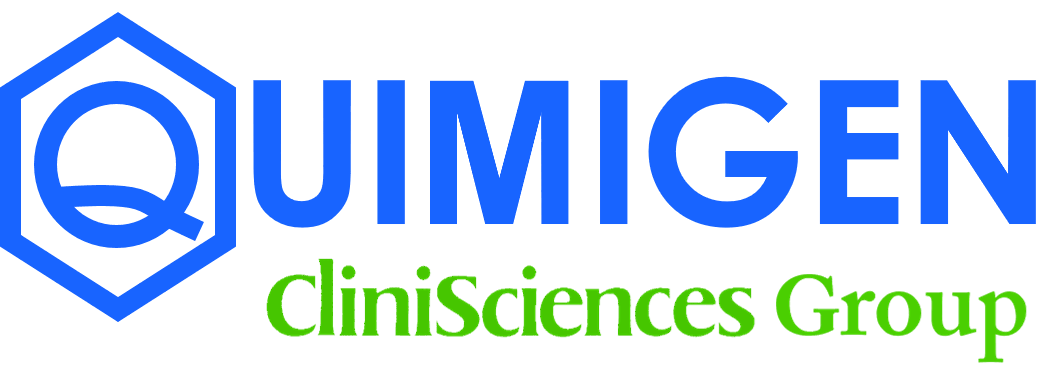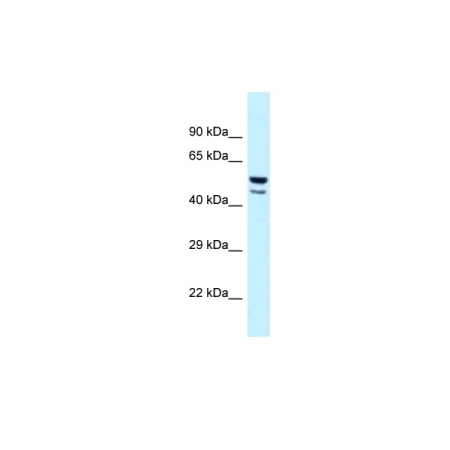Quimigen Portugal > JUN antibody - middle region
JUN antibody - middle region
Brand : Aviva Systems Biology
Request more information
Please log in to use this feature.
| Datasheets/Manuals | Printable datasheet for anti-JUN (ARP30926_P050) antibody |
|---|
| Tested Species Reactivity | Human, Mouse, Sea Urchin |
|---|---|
| Predicted Species Reactivity | Human, Mouse, Rat, Cow, Dog, Goat, Guinea Pig, Horse, Rabbit, Sheep, Zebrafish |
| Product Format | Liquid. Purified antibody supplied in 1x PBS buffer with 0.09% (w/v) sodium azide and 2% sucrose. |
| Clonality | Polyclonal |
| Host | Rabbit |
| Application | WB |
| Reconstitution and Storage | For short term use, store at 2-8C up to 1 week. For long term storage, store at -20C in small aliquots to prevent freeze-thaw cycles. |
| Purification | Affinity Purified |
| Predicted Homology Based on Immunogen Sequence | Cow: 100%; Dog: 100%; Goat: 100%; Guinea Pig: 100%; Horse: 100%; Human: 100%; Mouse: 100%; Rabbit: 100%; Rat: 100%; Sheep: 79%; Zebrafish: 100% |
| Peptide Sequence | Synthetic peptide located within the following region: QHPRLQALKEEPQTVPEMPGETPPLSPIDMESQERIKAERKRMRNRIAAS |
| Concentration | 0.5 mg/ml |
| Blocking Peptide | For anti-JUN (ARP30926_P050) antibody is Catalog # AAP30926 |
| Gene Symbol | JUN |
|---|---|
| Gene Full Name | Jun proto-oncogene |
| Alias Symbols | AP1, p39, AP-1, cJUN, c-Jun |
| NCBI Gene Id | 3725 |
| Protein Name | Transcription factor AP-1 |
| Description of Target | JUN gene is the putative transforming gene of avian sarcoma virus 17. I JUN is highly similar to the viral protein, and interacts directly with specific target DNA sequences to regulate gene expression. JUN gene is intronless and is mapped to 1p32-p31, a chromosomal region involved in both translocations and deletions in human malignancies.This gene is the putative transforming gene of avian sarcoma virus 17. It encodes a protein which is highly similar to the viral protein, and which interacts directly with specific target DNA sequences to regulate gene expression. This gene is intronless and is mapped to 1p32-p31, a chromosomal region involved in both translocations and deletions in human malignancies. |
| Uniprot ID | P05412 |
| Protein Accession # | NP_002219 |
| Nucleotide Accession # | NM_002228 |
| Protein Size (# AA) | 331 |
| Molecular Weight | 36kDa |
| Protein Interactions | PPP3CA; SP1; HDAC1; GSK3B; FOS; ABL1; MAPK8; RFWD2; CORO7; EP300; STRN4; MAPRE3; CREB3; PRRC2A; MDM2; SMAD2; HSP90AA1; HSPA8; ATF2; APP; APLP2; GOPC; BBS7; ETS1; CREBBP; CASP9; UBC; NCOR1; EPAS1; DDIT3; BATF2; BATF3; BATF; FOSL1; SMARCD3; CEBPG; CEBPE; AT |
Protein interactions
| Name | # of Products |
|---|---|
| APLP2 | 34 |
| ARRB1 | 194 |
| ATF2 | 93 |
| ATF3 | 84 |
| ATF4 | 87 |
| CEBPA | 123 |
| CHD3 | 283 |
| CREB1 | 152 |
| CREBBP | 802 |
| CSK | 121 |
| DACH1 | 34 |
| EDF1 | 62 |
| EP300 | 986 |
| ESR1 | 695 |
| FOS | 181 |
| GNB2L1 | 144 |
| HDAC1 | 928 |
| HDAC9 | 94 |
| HIF1A | 194 |
| HMGA1 | 91 |
| HSP90AA1 | 525 |
| IKBKB | 287 |
| KAT7 | 100 |
| MACF1 | 44 |
| MAPK1 | 575 |
| MAPK8 | 256 |
| MAZ | 24 |
| MBD3 | 92 |
| MLL3 | 52 |
| MTA3 | 30 |
| MYC | 816 |
| NFE2L2 | 86 |
| PIAS1 | 224 |
| PIAS2 | 131 |
| PPP2R2D | 74 |
| RNF187 | 17 |
| SIRT1 | 310 |
| SMAD3 | 511 |
| SP1 | 551 |
| STAT6 | 119 |
| SUMO1 | 972 |
| SUMO2 | 442 |
| SUMO3 | 154 |
| Tat | 632 |
| UBC | 7030 |
Biological pathways
| Name | # of Products |
|---|---|
| Innate immune response | 905 |
| MyD88-dependent toll-like receptor signaling pathway | 331 |
| MyD88-independent toll-like receptor signaling pathway | 288 |
| Negative regulation by host of viral transcription | 52 |
| Negative regulation of DNA binding | 67 |
| Negative regulation of transcription, DNA-dependent | 660 |
| Positive regulation by host of viral transcription | 43 |
| Positive regulation of transcription from RNA polymerase II promoter | 1210 |
| Regulation of sequence-specific DNA binding transcription factor activity | 200 |
| SMAD protein import into nucleus | 30 |
| SMAD protein signal transduction | 65 |
| Stress-activated MAPK cascade | 207 |
| Toll signaling pathway | 369 |
| Toll-like receptor 1 signaling pathway | 309 |
| Toll-like receptor 2 signaling pathway | 309 |
| Toll-like receptor 3 signaling pathway | 272 |
| Toll-like receptor 4 signaling pathway | 330 |
| Transforming growth factor beta receptor signaling pathway | 171 |
Biological process
| Name | # of Products |
|---|---|
| Aging | 124 |
| Angiogenesis | 196 |
| Axon regeneration | 9 |
| Cellular process | 25 |
| Cellular response to calcium ion | 23 |
| Cellular response to potassium ion starvation | 2 |
| Circadian rhythm | 42 |
| Innate immune response | 300 |
| Leading edge cell differentiation | 1 |
| Learning | 36 |
| Liver development | 83 |
| Membrane depolarization | 24 |
| Microglial cell activation | 5 |
| MyD88-dependent toll-like receptor signaling pathway | 65 |
| MyD88-independent toll-like receptor signaling pathway | 56 |
| Negative regulation by host of viral transcription | 20 |
| Negative regulation of cell proliferation | 375 |
| Negative regulation of DNA binding | 25 |
| Negative regulation of neuron apoptosis | 96 |
| Negative regulation of protein autophosphorylation | 10 |
| Negative regulation of transcription, DNA-dependent | 520 |
| Outflow tract morphogenesis | 32 |
| Positive regulation by host of viral transcription | 12 |
| Positive regulation of DNA replication | 56 |
| Positive regulation of endothelial cell proliferation | 68 |
| Positive regulation of fibroblast proliferation | 47 |
| Positive regulation of monocyte differentiation | 4 |
| Positive regulation of neuron apoptosis | 53 |
| Positive regulation of Rho GTPase activity | 25 |
| Positive regulation of smooth muscle cell proliferation | 67 |
| Positive regulation of transcription from RNA polymerase II promoter | 968 |
| Positive regulation of transcription, DNA-dependent | 681 |
| Regulation of cell cycle | 69 |
| Regulation of sequence-specific DNA binding transcription factor activity | 79 |
| Release of cytochrome c from mitochondria | 33 |
| Response to cAMP | 56 |
| Response to cytokine stimulus | 73 |
| Response to drug | 323 |
| Response to hydrogen peroxide | 47 |
| Response to lipopolysaccharide | 175 |
| Response to mechanical stimulus | 58 |
| Response to organic cyclic compound | 128 |
| Response to radiation | 32 |
| SMAD protein import into nucleus | 10 |
| SMAD protein signal transduction | 22 |
| Stress-activated MAPK cascade | 47 |
| Toll signaling pathway | 66 |
| Toll-like receptor 1 signaling pathway | 59 |
| Toll-like receptor 2 signaling pathway | 61 |
| Toll-like receptor 3 signaling pathway | 54 |
| Toll-like receptor 4 signaling pathway | 64 |
| Toll-like receptor signaling pathway | 71 |
| Transforming growth factor beta receptor signaling pathway | 95 |
| TRIF-dependent toll-like receptor signaling pathway | 53 |
Cellular components
| Name | # of Products |
|---|---|
| Cytosol | 1868 |
| Nuclear chromosome | 26 |
| Nuclear euchromatin | 14 |
| Nucleoplasm | 775 |
| Nucleus | 4914 |
| Transcription factor complex | 286 |
| Transcriptional repressor complex | 43 |
Protein function
| Name | # of Products |
|---|---|
| CAMP response element binding | 36 |
| DNA binding | 3958 |
| Double-stranded DNA binding | 533 |
| Protein binding | 12191 |
| Protein homodimerization activity | 1852 |
| Rho GTPase activator activity | 71 |
| RNA polymerase II activating transcription factor binding | 98 |
| RNA polymerase II distal enhancer sequence-specific DNA binding | 70 |
| RNA polymerase II transcription factor binding transcription factor activity involved in positive regulation of transcription | 39 |
| R-SMAD binding | 76 |
| Sequence-specific distal enhancer binding RNA polymerase II transcription factor activity | 418 |
| Sequence-specific DNA binding | 1803 |
| Sequence-specific DNA binding transcription factor activity | 2776 |
| Transcription coactivator activity | 587 |
| Transcription factor binding | 934 |
| Transcription regulatory region DNA binding | 657 |
Diseases
| Name | # of Products |
|---|---|
| Proto-oncogene | 793 |
-
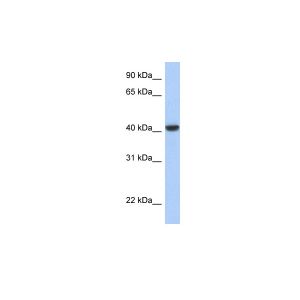 JUN Antibody - N-terminal region (P100911_P050)Catalog #: P100911_P050Species Tested: HumanApplication: CHIP, IHC, WBFormat: Liquid. Purified antibody supplied in 1x PBS buffer with 0.09% (w/v) sodium azide and 2% sucrose.
JUN Antibody - N-terminal region (P100911_P050)Catalog #: P100911_P050Species Tested: HumanApplication: CHIP, IHC, WBFormat: Liquid. Purified antibody supplied in 1x PBS buffer with 0.09% (w/v) sodium azide and 2% sucrose. -
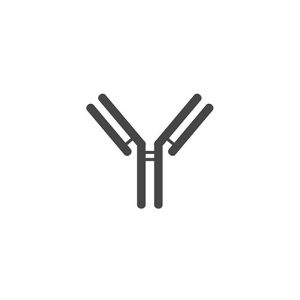 JUN Antibody (OARA02644)Catalog #: OARA02644Conjugation: UnconjugatedApplication: ELISA, WBFormat: Liquid (sterile filtered)Size: 25UL
JUN Antibody (OARA02644)Catalog #: OARA02644Conjugation: UnconjugatedApplication: ELISA, WBFormat: Liquid (sterile filtered)Size: 25UL -
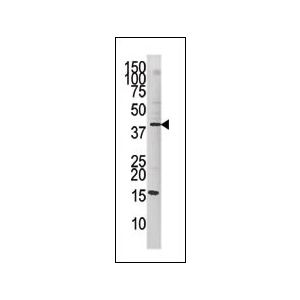 cJun Antibody (Phospho-Ser63) (OAAB16029)Catalog #: OAAB16029Application: EIAFormat: Liquid. PBS with 0.09% (W/V) sodium azide.Size: 400ul
cJun Antibody (Phospho-Ser63) (OAAB16029)Catalog #: OAAB16029Application: EIAFormat: Liquid. PBS with 0.09% (W/V) sodium azide.Size: 400ul
